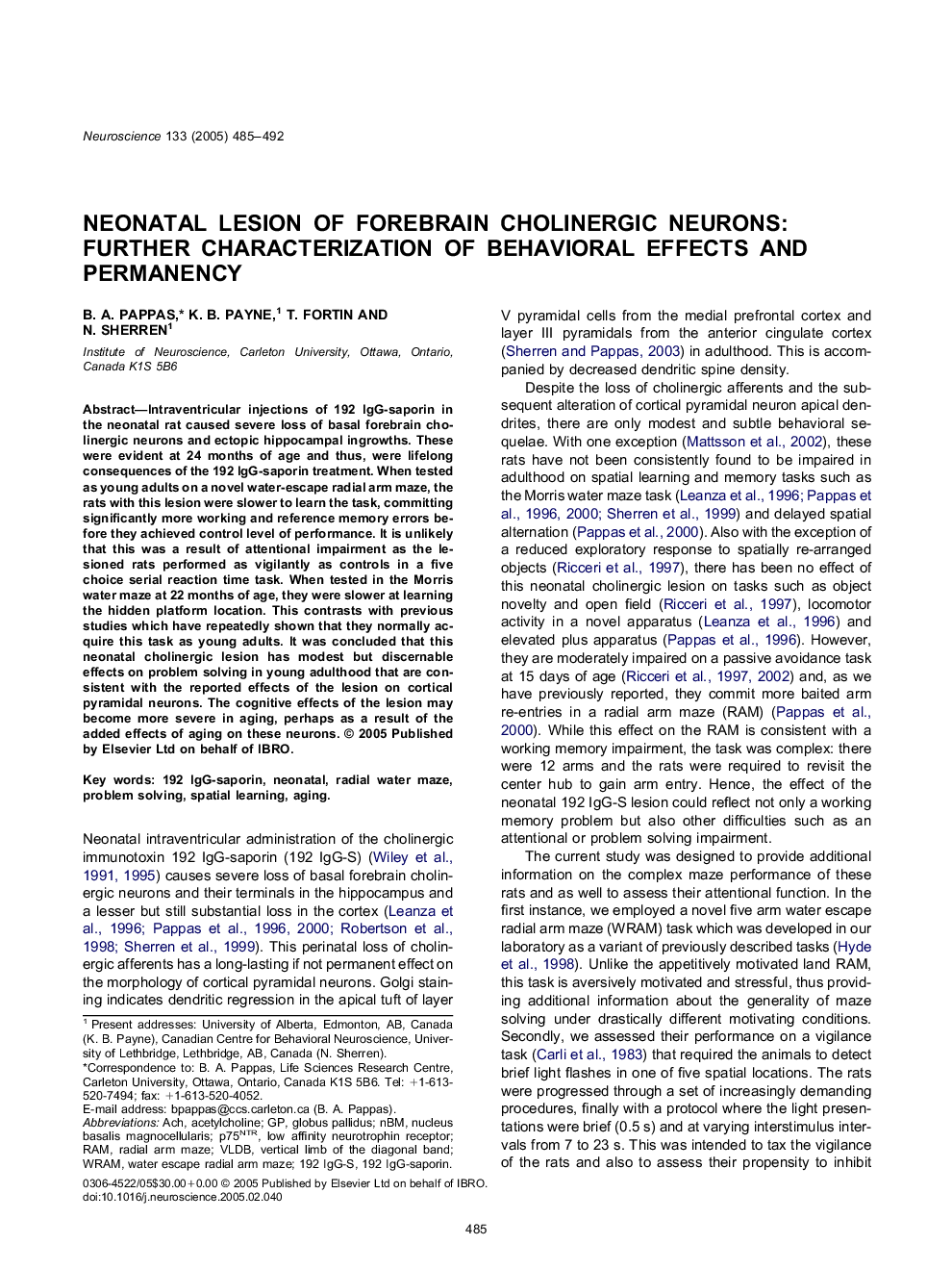| Article ID | Journal | Published Year | Pages | File Type |
|---|---|---|---|---|
| 9425413 | Neuroscience | 2005 | 8 Pages |
Abstract
Intraventricular injections of 192 IgG-saporin in the neonatal rat caused severe loss of basal forebrain cholinergic neurons and ectopic hippocampal ingrowths. These were evident at 24 months of age and thus, were lifelong consequences of the 192 IgG-saporin treatment. When tested as young adults on a novel water-escape radial arm maze, the rats with this lesion were slower to learn the task, committing significantly more working and reference memory errors before they achieved control level of performance. It is unlikely that this was a result of attentional impairment as the lesioned rats performed as vigilantly as controls in a five choice serial reaction time task. When tested in the Morris water maze at 22 months of age, they were slower at learning the hidden platform location. This contrasts with previous studies which have repeatedly shown that they normally acquire this task as young adults. It was concluded that this neonatal cholinergic lesion has modest but discernable effects on problem solving in young adulthood that are consistent with the reported effects of the lesion on cortical pyramidal neurons. The cognitive effects of the lesion may become more severe in aging, perhaps as a result of the added effects of aging on these neurons.
Keywords
Related Topics
Life Sciences
Neuroscience
Neuroscience (General)
Authors
B.A. Pappas, K.B. Payne, T. Fortin, N. Sherren,
